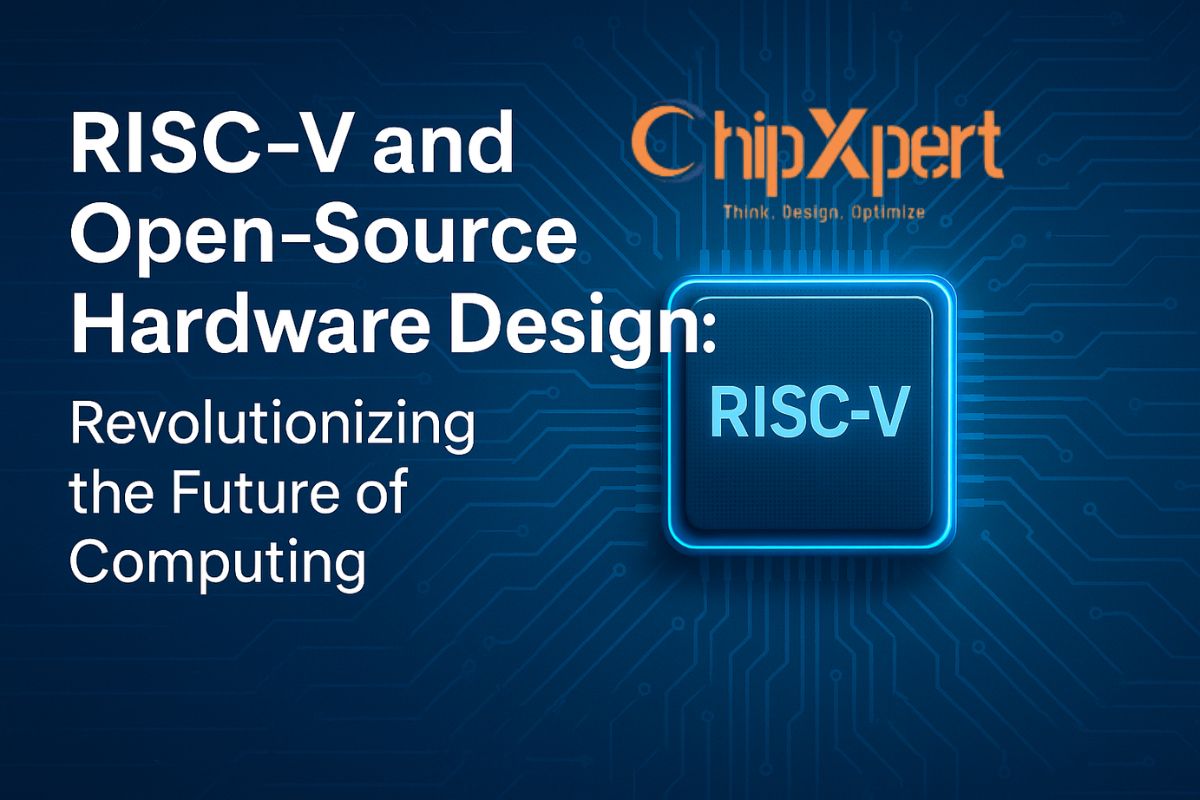RISC-V and Open-Source Hardware Design : Revolutionising the Future of Computing
In the rapidly evolving world of technology, RISC-V has emerged as a game-changer, reshaping how we approach hardware design and innovation. Unlike proprietary architectures, RISC-V offers an open-source instruction set architecture (ISA) that empowers developers, engineers, and businesses to create custom processors without the constraints of licensing fees or restricted access. Coupled with the rise of open-source hardware design, RISC-V is driving a new era of accessibility, collaboration, and innovation in the semiconductor industry. In this article, we’ll explore what RISC-V is, why open-source hardware design matters, and how these trends are transforming the future of computing.
What is RISC-V?
RISC-V (pronounced “risk-five”) is an open-standard ISA based on Reduced Instruction Set Computer (RISC) principles. Unlike traditional proprietary ISAs like x86 or ARM, RISC-V is freely available under open-source licenses, allowing anyone to use, modify, and implement it without paying royalties. Developed at the University of California, Berkeley, in 2010, RISC-V was designed to be simple, modular, and extensible, making it suitable for a wide range of applications—from IoT devices and embedded systems to high-performance computing.
The open nature of RISC-V eliminates barriers to entry, enabling startups, academics, and hobbyists to design custom processors tailored to specific needs. Its modular architecture allows developers to select only the instruction sets required for their application, optimizing performance and efficiency. This flexibility has made RISC-V a favorite among innovators looking to push the boundaries of hardware design.
The Rise of Open-Source Hardware Design
Open-source hardware design complements RISC-V by making the entire hardware development process more transparent and collaborative. Unlike proprietary hardware, where designs are closely guarded, open-source hardware involves sharing schematics, layouts, and other design files under licenses like CERN Open Hardware License or MIT. This approach fosters a global community of developers who can contribute to, improve, and build upon existing designs.
The open-source hardware movement is driven by the belief that innovation thrives in an environment of shared knowledge. By making hardware designs freely available, engineers can iterate faster, reduce development costs, and create solutions that are more accessible to diverse industries. From microcontrollers to AI accelerators, open-source hardware is enabling a new wave of creativity in the tech world.
Why RISC-V and Open-Source Hardware Matter
The combination of RISC-V and open-source hardware design is revolutionizing the semiconductor industry in several ways. Here’s why this duo is so impactful:
1. Cost Efficiency and Accessibility
Proprietary ISAs like ARM charge licensing fees, which can be a significant barrier for startups or small organizations. RISC-V eliminates these costs, allowing companies to allocate resources to innovation rather than licensing. Similarly, open-source hardware reduces the need for expensive proprietary tools, making it easier for small teams to enter the market.
2. Customization and Flexibility
RISC-V’s modular design allows developers to create processors tailored to specific workloads, such as machine learning, cryptography, or low-power IoT applications. Open-source hardware takes this further by enabling customization at the hardware level, from circuit design to system integration. This flexibility is critical in industries where one-size-fits-all solutions fall short.
3. Global Collaboration
The open-source ethos fosters collaboration across borders. Developers from different countries, industries, and backgrounds can contribute to RISC-V-based projects or share open-source hardware designs. Organizations like the RISC-V International community and platforms like OpenCores provide resources and tools to support this collaborative ecosystem.
4. Security and Transparency
Proprietary hardware and ISAs often operate as “black boxes,” making it difficult to verify their security. In contrast, RISC-V and open-source hardware designs are fully auditable, allowing developers to identify and fix vulnerabilities. This transparency is crucial in applications like autonomous vehicles, medical devices, and critical infrastructure, where security is paramount.
5. Accelerating Innovation
By removing financial and technical barriers, RISC-V and open-source hardware accelerate the pace of innovation. Companies can prototype and deploy new solutions faster, while researchers can experiment with cutting-edge designs without needing massive budgets. This democratization of hardware design is driving advancements in AI, edge computing, and more.
Real-World Applications of RISC-V and Open-Source Hardware
The impact of RISC-V and open-source hardware is already visible across industries. Here are some notable examples:
- IoT and Embedded Systems: RISC-V’s low-power capabilities make it ideal for IoT devices like smart sensors, wearables, and home automation systems. Open-source hardware designs allow manufacturers to create cost-effective, customized solutions for these markets.
- AI and Machine Learning: Companies like NVIDIA and SiFive are using RISC-V to develop AI accelerators and processors optimized for machine learning workloads. Open-source hardware designs enable rapid prototyping of these specialized chips.
- High-Performance Computing: RISC-V is gaining traction in supercomputing, with projects like the European Processor Initiative (EPI) leveraging it to build energy-efficient processors for exascale computing.
- Education and Research: Universities and research institutions use RISC-V and open-source hardware to teach computer architecture and develop experimental processors, fostering the next generation of engineers.
Challenges and Future Outlook
While RISC-V and open-source hardware offer immense potential, they face challenges. The ecosystem is still maturing, and proprietary architectures like ARM and x86 have decades of optimization and established toolchains. Developers may encounter compatibility issues or a steeper learning curve when adopting open-source solutions. Additionally, ensuring quality control and standardization in a decentralized, collaborative environment can be complex.
However, the future looks promising. Major tech giants like Intel, Google, and Qualcomm are investing in RISC-V, signaling its growing mainstream adoption. The open-source hardware community is also expanding, with platforms like Chisel and Verilog simplifying the design process. As tools and standards improve, RISC-V and open-source hardware are poised to challenge the dominance of proprietary systems.
Want to leanr VLSI courses – Join ChipXpert – VLSI Training Institute
How to Get Started with RISC-V and Open-Source Hardware
Ready to dive into the world of RISC-V and open-source hardware? Here’s how you can begin:
- Learn the Basics: Start with resources like the RISC-V Foundation’s website or online courses on computer architecture.
- Experiment with Tools: Use open-source tools like Chisel, Verilog, or RISC-V GNU Toolchain to design and simulate processors.
- Join the Community: Engage with communities on platforms like GitHub, OpenCores, or RISC-V International to collaborate and share knowledge.
- Prototype and Iterate: Start with simple projects, like building a RISC-V-based microcontroller, and gradually tackle more complex designs.
Conclusion
RISC-V and open-source hardware design are transforming the semiconductor industry by making hardware development more accessible, customisation, and collaborative. By breaking down barriers, these technologies empower innovators to create solutions that were once out of reach. Whether you’re a startup building an IoT device or a researcher designing a next-generation AI chip, RISC-V and open-source hardware provide the tools to turn ideas into reality. As the ecosystem grows, this open-source revolution is set to redefine the future of computing, one processor at a time.



